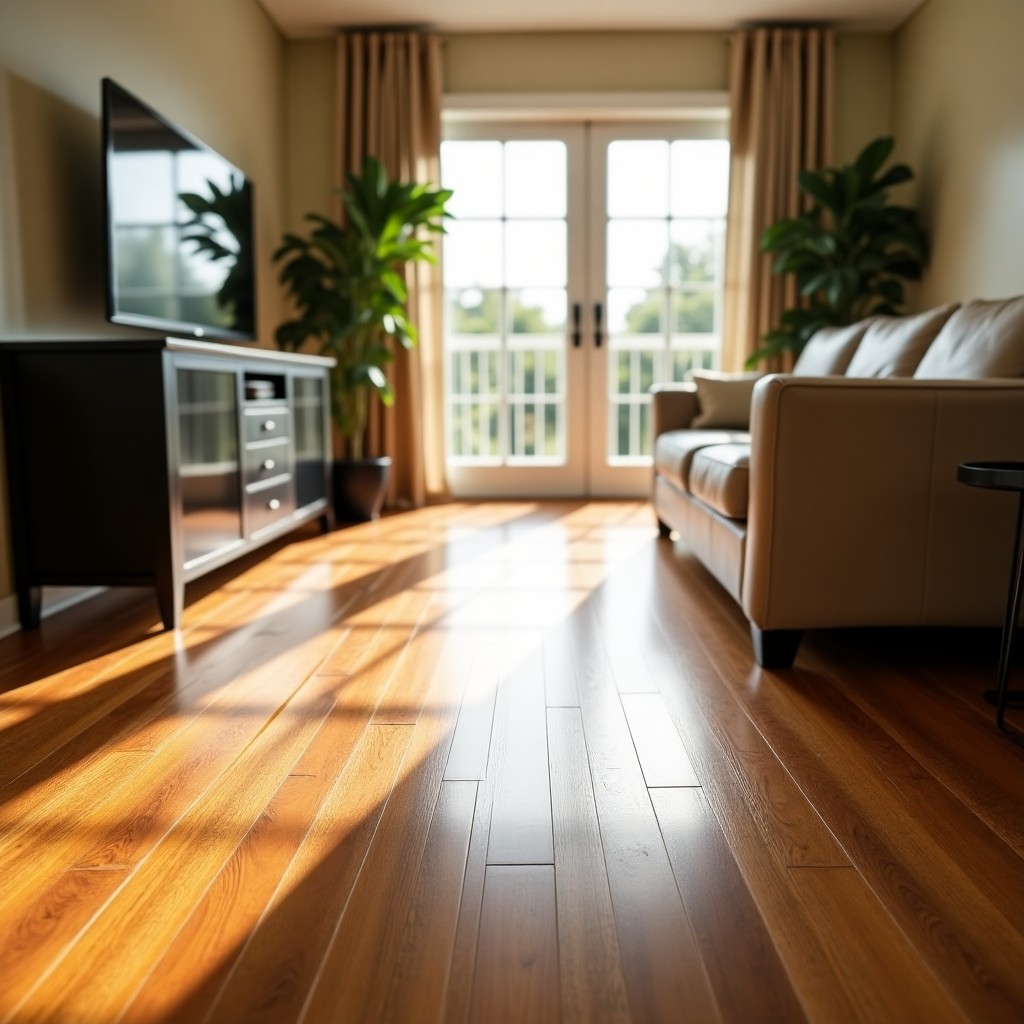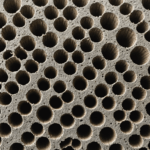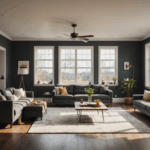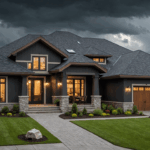Hardwood flooring has long been a cherished choice among homeowners and design professionals alike, renowned for its timeless elegance and enduring appeal. Its inherent sophistication enhances the aesthetic value of any home, making it a compelling option during any home remodeling project. According to a study by the National Association of Realtors, 54% of buyers are willing to pay more for homes with hardwood floors, illustrating its undeniable market appeal.
One of the primary benefits of hardwood flooring is its remarkable durability. With proper care and maintenance, hardwood can last for decades, sometimes even over a century. This longevity makes it an economically sound investment in the home, as it not only withstands the test of time but also increases property value, which is a significant consideration in any material comparison when selecting flooring options.
Additionally, hardwood is celebrated for its versatility. Available in numerous species, finishes, and styles, it complements almost every décor theme, from rustic to contemporary. The ability to refinish hardwood floors multiple times further extends their life and allows homeowners to adapt their floors to evolving design trends without the need for complete replacement. This adaptability is particularly appealing in the ever-changing landscape of interior design.
Moreover, hardwood’s natural composition contributes to better indoor air quality. Unlike carpet or certain types of vinyl that can harbor dust, allergens, and odor, hardwood surfaces are easy to keep clean, thus maintaining a healthier home environment. This feature is a crucial consideration for homes with allergy sufferers who need a hypoallergenic flooring solution.
- Environmental impact: Many wood flooring options are sourced sustainably, offering an eco-friendly choice for environmentally conscious consumers. The industry has seen an increase in the use of certified hardwoods that support responsible forest management.
- Sound insulation: While some might view the susceptibility to scratch and sound transmission as drawbacks, these issues can be mitigated with area rugs and underlayment that soften footsteps and mute ambient noise.
While initial costs for hardwood might be higher than those of vinyl or tile, the value added through its durability, aesthetic versatility, and market demand often outweighs this investment. Given these advantages, it’s clear why hardwood continues to be a popular choice for homeowners aiming to blend beauty, functionality, and long-term value in their remodeling endeavors.
Advantages of vinyl options
Vinyl flooring has surged in popularity over recent years, offering a versatile and cost-effective alternative to traditional flooring options. Characterized by its resilience and the breadth of designs available, vinyl flooring often surprises homeowners during the flooring decision process with its capacity to mimic the appearance of more expensive materials like hardwood or stone.
One of the standout characteristics of vinyl is its water resistance. This quality makes it exceptionally suitable for areas prone to moisture, such as kitchens, bathrooms, and basements. Unlike hardwood, which can warp, or tile, which can stain, vinyl flooring remains largely impervious to water damage, ensuring a long-lasting and low-maintenance solution that withstands the everyday challenges of busy households.
Another advantage of vinyl flooring is its comfort underfoot. The material’s inherent softness provides a more forgiving surface than tile, making it a preferred choice in spaces where extended standing occurs. This feature is particularly beneficial in family homes where children might spend time playing on the floor, or in kitchen settings where adults stand for prolonged periods while cooking.
Vinyl’s ease of installation is another frequent selling point for remodeling projects where time and budget constraints are factors. Many vinyl flooring options are designed for straightforward installation, with click-and-lock systems or adhesive backings that enable DIY enthusiasts to tackle the project without professional assistance. This aspect not only reduces labor costs but also positions vinyl as a quick-fix solution for anyone seeking immediate transformation.
When considering aesthetics, modern vinyl technology has advanced substantially, allowing the material to convincingly emulate natural textures and colors at a fraction of the cost. This versatility in appearance permits homeowners to achieve their desired look, whether it’s a rustic wood grain or a sleek marble finish, within any budgetary limits.
Vinyl flooring offers considerable practical and economic advantages, especially for those navigating the myriad flooring options available today. In the context of remodeling, where balancing quality, cost, and style is crucial, vinyl stands out as a compelling option that delivers on multiple fronts.
- Cost-effective: Vinyl is typically less expensive than hardwood and tile, making it an ideal choice for budget-conscious homeowners who want aesthetic appeal without breaking the bank.
- Maintenance: Vinyl flooring requires minimal upkeep compared to other materials. Regular sweeping and occasional mopping keep it looking new, which is especially advantageous for busy households.
- Sound dampening: Vinyl’s soft and pliable composition helps absorb sound, making it a quieter option compared to harder surfaces like tile.
- Innovation in design: Ongoing advancements in design technology allow vinyl to convincingly replicate luxurious flooring options, making it a versatile choice in both style and function.
Pros of tile installations
When considering flooring options, tile installations offer a number of compelling advantages, each contributing to their popularity among homeowners and professionals in the remodeling industry. One of the primary benefits of tile is its impressive durability. Highly resistant to wear and tear, tile is an ideal choice for high-traffic areas, maintaining its pristine appearance over time without succumbing to scratches or dents that can afflict softer materials. This robust resilience ensures a long-lasting surface that won’t need frequent replacement, making it a cost-effective choice in the long run.
Tile is also known for its exceptional water resistance. Unlike some materials that may warp or sustain damage when exposed to moisture, tile surfaces repel water, making them perfect for bathrooms, kitchens, and pool areas. Their ability to withstand humid environments without deteriorating is unequaled in material comparison, ensuring that they remain functional and beautiful in spaces where moisture is a constant concern.
Aesthetic versatility is another notable advantage. Available in a myriad of styles, colors, and textures, tiles can mimic any look—from natural stone to wooden floorboards—without the attendant maintenance issues. This flexibility allows homeowners to select designs that complement their interior décor while ensuring a sleek and cohesive look throughout their spaces. Furthermore, tiles can be creatively arranged in intricate patterns or mosaics, adding a unique visual interest and a personal touch to any room.
One common mistake people make when choosing tiles is not considering the grout. Grout lines can become discolored over time, affecting the tile’s appearance. It’s vital to select the right grout color and ensure proper sealing to maintain cleanliness and aesthetic appeal. Another pitfall is overlooking slip resistance. While glossy tiles can offer a luxurious look, they might pose a slip hazard when wet, particularly in bathrooms. Opting for textured or matte finishes in wet areas can prevent accidents.
Moreover, thermal conductivity is a hidden gem within the tile’s repertoire. Tiles can absorb and retain heat, making them compatible with underfloor heating systems. This feature ensures a warm ambiance during colder months, which can be crucial for regions with fluctuating temperatures.
However, it’s essential to address misconceptions about tile installation. While the upfront cost of tiles can be higher than vinyl, their longevity and minimal maintenance often result in greater savings over time. DIY enthusiasts should also be cautious, as improper installation may lead to uneven surfaces or cracked tiles, which might require costly repairs. It’s often advisable to consult professionals to ensure a flawless finish.
Ultimately, the combination of durability, water resistance, and aesthetic range makes tile a standout choice in flooring options. Its ability to cater to various design preferences while maintaining practicality secures its place as a top contender in any remodeling project.
Comparing costs and durability
When selecting flooring options, it’s crucial to consider both the initial costs and the long-term durability of each material. While hardwood, vinyl, and tile each bring their own set of advantages, understanding their financial and functional impacts over time can guide you toward the right choice for your space.
Hardwood flooring, with its classic elegance, often presents higher upfront costs compared to alternatives like vinyl or tile. However, its longevity and the potential to increase your home’s value can outweigh its initial price point. When maintained properly, hardwood can last generations, acting as a sound investment that withstands the test of time. The ability to refinish it repeatedly means you can adapt the wood’s appearance to fit changing trends, further extending its life and maintaining its appeal.
In contrast, vinyl offers a budget-friendly solution that doesn’t compromise on style. Its installation is typically less expensive, and it’s designed to mimic the appearance of higher-end materials, making it an attractive option for many homeowners. Vinyl’s resilience to water damage and everyday wear make it a low-maintenance choice for busy households. While its lifespan may not match that of hardwood, advancements in production and design have significantly enhanced its durability, offering a pragmatic balance between cost and performance.
Tile installations represent a middle ground concerning costs, usually sitting between vinyl and hardwood. The upfront investment might be higher than vinyl, but tiles’ unparalleled durability can mean fewer replacements or repairs. Resistant to moisture and wear, tiles are ideal for high-traffic and wet areas, such as kitchens and bathrooms. Their longevity might make them the preferred choice for those seeking a one-time installation with minimal future upkeep. However, it’s important to factor in the quality of the grout and slip resistance when assessing tiles for specific areas.
When conducting a material comparison focused on costs and durability, consider each option’s specific benefits relative to its environment. If you prioritize long-term value and a natural aesthetic, hardwood might be your ideal choice. If budget constraints and water resistance are primary concerns, vinyl’s economic appeal is undeniable. For areas demanding resilience, tile can offer a robust solution that looks great for years.
Ultimately, aligning your choice with your lifestyle needs and financial plan can simplify the decision-making process. Remember, the right flooring not only grounds your home’s aesthetic but also enhances its functionality, adding to your space’s comfort and enjoyment. Embrace the journey of your remodeling project as an exciting opportunity to transform your living space in a way that resonates with your personal style and practical demands.
Making the best choice for your space
Embarking on a flooring makeover requires careful thought and strategic planning to ensure the right choices align with both aesthetic desires and practical needs. Evaluating your lifestyle is pivotal in making the most appropriate flooring decision. Consider high-traffic areas, potential moisture exposure, and the presence of pets or children, all of which influence the optimal material fit. For homes with bustling activity, durability may take precedence, steering your choice towards options like tile or vinyl, known for their resilience against wear and water damage.
Budget is another crucial factor in this remodeling journey. With each material offering a range of potential costs, it’s important to balance your financial limits with long-term benefits. While vinyl offers an affordable upfront price with low maintenance, the timeless appeal and value enhancement of hardwood could justify the initial expenditure over time, especially if you foresee staying in your home for many years to come. Tile falls somewhere in between but offers its own unique strengths in both durability and style versatility.
Design vision cannot be overlooked. The aesthetic you wish to establish is just as vital in shaping your decision. Warmth and classical charm can be achieved with hardwood, aligning well with traditional or rustic design sensibilities. Alternatively, contemporary spaces might benefit from the sleek allure of tile, particularly in unique shapes or patterns that contribute to a modern look. Vinyl, with its evolving range of textures and appearances, provides a versatile choice for both traditional and contemporary interiors without exceeding budget constraints.
Moreover, consider environmental factors. Homeowners with eco-conscious goals might lean towards sustainably sourced hardwood options or opt for vinyl and tile materials with recycled content. An environmentally friendly choice contributes both to your home’s aesthetic and to the broader initiative of sustainable living.
Assess whether you plan to undertake the installation yourself or hire professional services. While DIY-savvy individuals may find vinyl’s user-friendly installation appealing, those seeking a flawless finish might prefer to invest in professional tile or hardwood installation, ensuring durability and precision.
Ultimately, choosing the right flooring option for your space involves a symbiosis of personal style, practical needs, and financial feasibility. Taking time to evaluate these factors will not only assist in narrowing down choices but also ensure that your flooring investment aligns seamlessly with your lifestyle and remodeling goals, enhancing both the function and beauty of your home.
- What type of flooring is best for high-traffic areas?
- Tiles and durable vinyl options are excellent choices for high-traffic areas due to their resistance to wear and tear. Both materials are designed to withstand constant foot traffic and maintain their appearance over time.
- Is hardwood flooring a good option for homes with pets?
- While hardwood can add elegance to a home, pet owners should consider the potential for scratches. Opting for harder woods or applying protective finishes can help mitigate damage and maintain the floor’s appearance.
- How does vinyl flooring compare to hardwood in terms of maintenance?
- Vinyl flooring is generally easier to maintain than hardwood. It requires regular sweeping and occasional mopping, while hardwood flooring benefits from more meticulous care, including refinishing over its lifetime to keep it looking its best.
- Are tiles a suitable choice for uneven subfloors?
- Tiles require a flat subfloor for a successful installation. If the subfloor is uneven, it must be leveled out to prevent tile cracking and maintain a smooth, even surface.
- How do I choose between laminate and vinyl flooring for my kitchen?
- Consider the susceptibility to moisture in your kitchen, as vinyl is highly water-resistant, making it a better choice in damp environments. Both materials offer a range of designs, but vinyl’s water-repelling properties are particularly beneficial in a kitchen setting.










